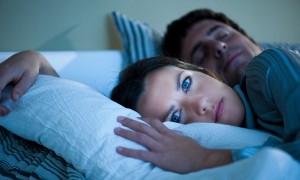Sweet dreams: Putting sleep study fears to rest
A few hours of lost sleep might seem harmless, but countless nights spent tossing and turning could signal a sleep disorder.
DOs, or osteopathic physicians, focus on prevention by gaining a deeper understanding of your lifestyle and environment as they partner to help you get healthy and stay well.
Brett M. Scotch, DO, a sleep medicine specialist at the Scotch Institute of Ear Nose & Throat in Wesley Chapel, Florida, explains how undergoing a sleep study could help put your sleepless nights to rest.
How a sleep study works
During a polysomnogram, otherwise known as a sleep study, a patient is hooked up to several non-invasive devices to measure parameters while you sleep, including:
- Airflow
- Respiratory effort
- Oxygen saturation
- Heart rate
- Brain waves
- Limb movements
- Snoring
The data is then analyzed and interpreted by a physician specializing in sleep medicine.
Why get a sleep study?
If your physician suspects you have a sleep disorder, a sleep study could be in order. A sleep study can help diagnose:
- Parasomnias (undesirable behavioral or physical phenomena occurring during sleep)
- Limb movement disorders
- Narcolepsy
- Various types of sleep apnea
Getting a good night’s test
You’ll be asked to arrive at a specially-equipped sleep center at the time you would normally go to bed. The center provides a comfortable place to sleep, just like a hotel room. Most sleep labs offer a private bedroom and bathroom. It is best to avoid alcohol or sedatives prior to the test.
Upon arrival, you will be connected to various monitoring devices and go to sleep like usual. In the morning, you can go about your day. The sleep specialist will review the data report, and then send a formal report to your physician.
What if I’m diagnosed with a sleep disorder?
If the sleep physician notes an obstructive sleep apnea, you may be called back for a second study with continuous positive airway pressure (CPAP) or bi-level positive airway pressure (BiPAP). While the initial study is a diagnostic test, a second study, if required, is considered the start of the treatment phase.
“This is when the patient is fitted with a continuous positive airway pressure (CPAP) mask,” Dr. Scotch explains.
At the second exam, you choose a face mask that is comfortable for you. While you are sleeping and wearing the mask, the parameters of sleep are again measured and various pressures of air are utilized to assess your response to treatment. The sleep physician then evaluates this data to determine the optimal pressure that resolves your underlying sleep disorder.
How long does a sleep study take?
The diagnostic test takes only one night. However, if the diagnostic test is positive for obstructive sleep apnea, a second treatment night is needed to provide CPAP or BiPAP therapy.

